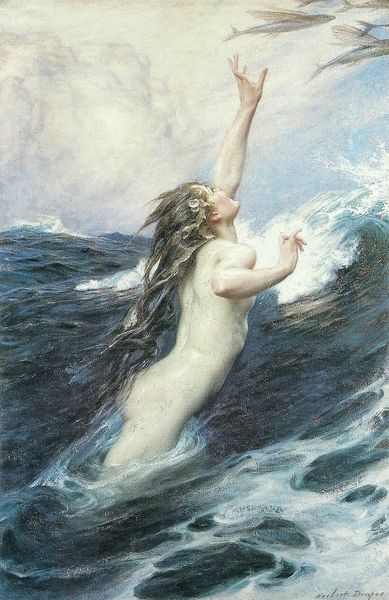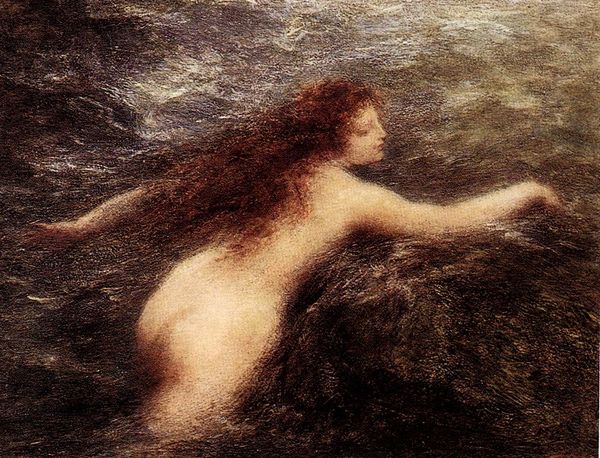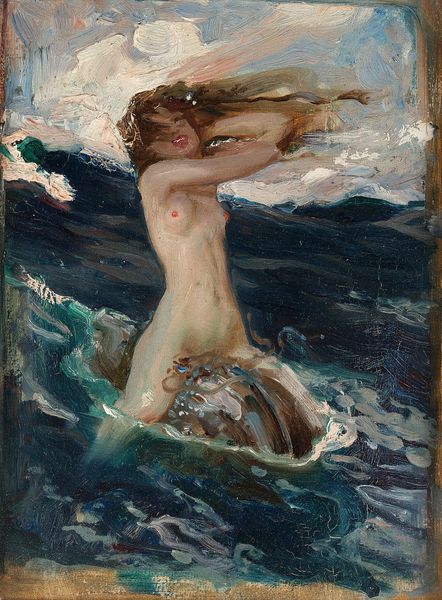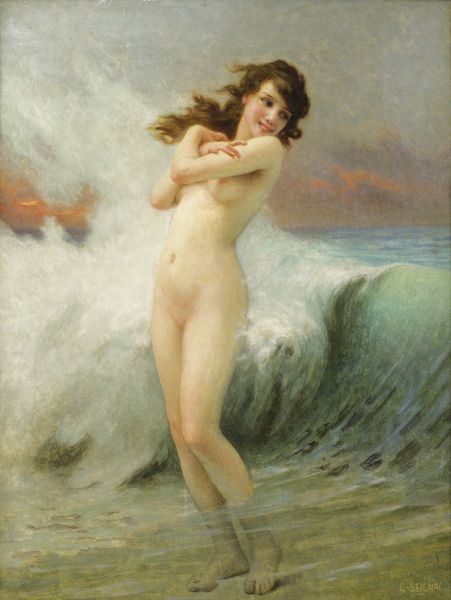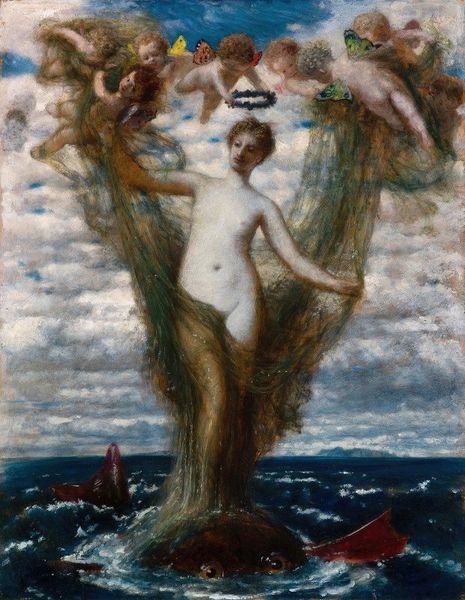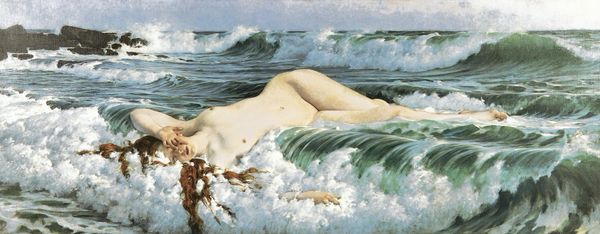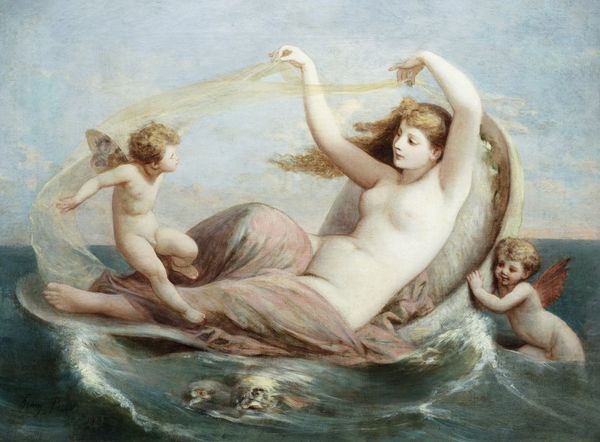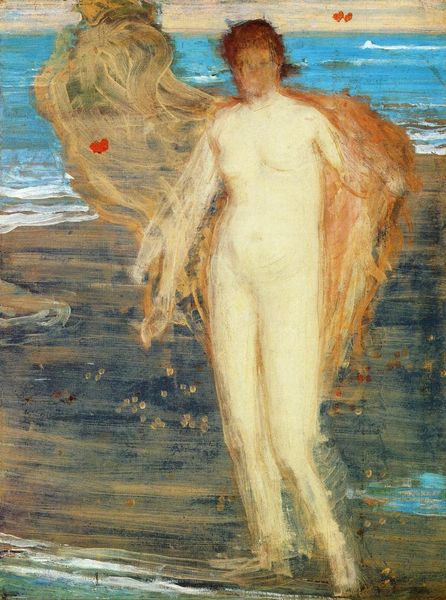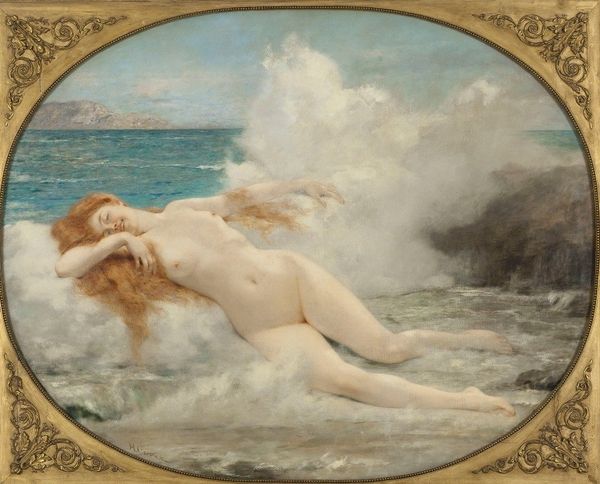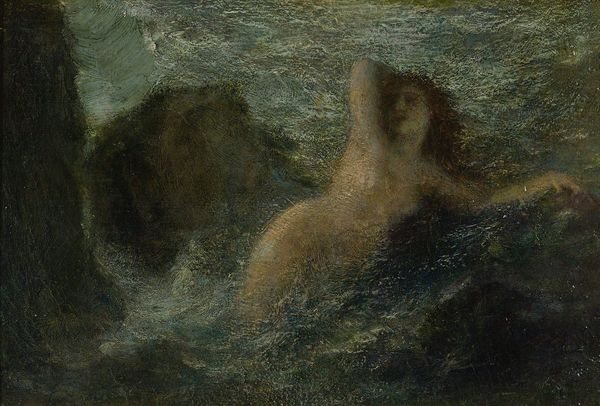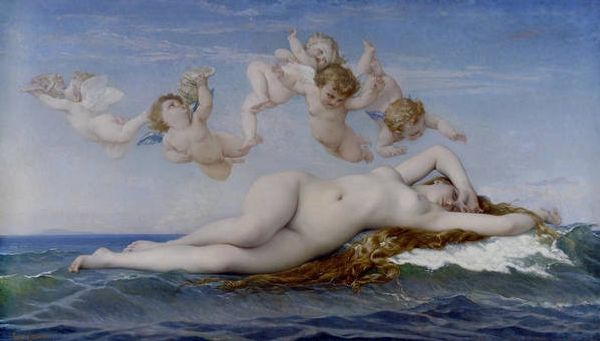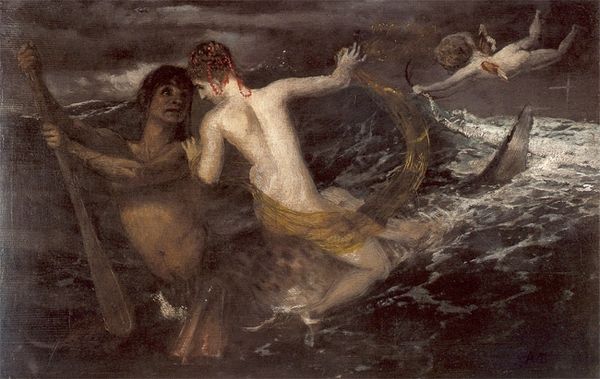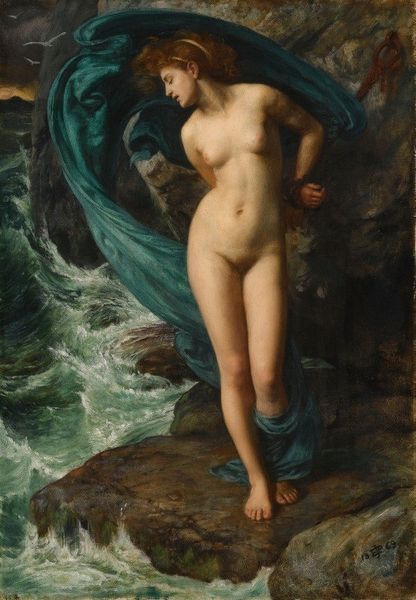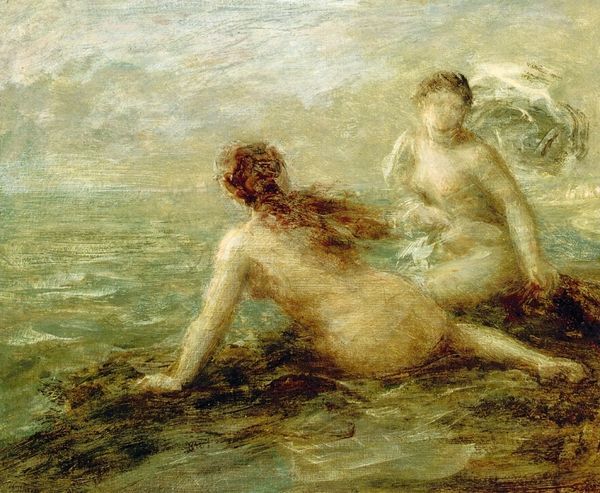
Copyright: Public domain
Herbert James Draper painted The Foam Sprite with oils on canvas, likely at the end of the 19th century. The application of paint is loose and energetic, almost gestural. Notice the artist’s focus on the play of light across the surface of the water, and the nymph’s body. The brushstrokes blend together, creating a sense of movement and fluidity. In Draper’s time, the use of oil paint was an established, professionalized practice. Pigments were increasingly manufactured for commercial sale, rather than being painstakingly made by hand in the studio. This turn toward industrialization allowed artists to concentrate on the composition and narrative of their paintings. While this undoubtedly spurred creativity, it also had the consequence of distancing art from other forms of skilled manual labor. Paintings like The Foam Sprite, with their emphasis on visual effect, encouraged a hierarchical distinction between fine art and craft. But in fact, the making matters just as much as the image itself.
